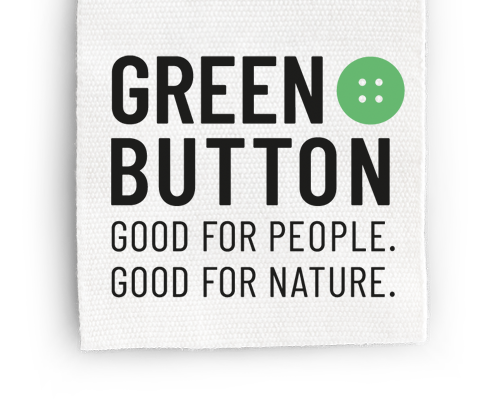Changes regarding exception rules for the use of fibres and materials
As part of the meta-label approach, the Green Button defines requirements for production processes at selected supply chain levels. Companies demonstrate these through recognised certification labels. Alongside the requirements for corporate due diligence processes, they are the basis for a product to be labeled with the Green Button.
In the Guidance to the list of approved fibres and materials it is defined for which fibres and materials recognised certification labels are required, which quantity limits apply, if any, and which fibres and materials may only be used under specific exception rules and which evidence has to be provided for these exceptions. The mentioned guidance is an extension of the list of approved fibres and materials.
Based on the exchange with our stakeholders, the scheme owner, the Federal Ministry for Economic Cooperation and Development (BMZ), has decided on the following changes regarding the requirements for fibre and material use to make the implementation of the Green Button 2.0 requirements more feasible.
These changes take effect with the adaptation of the standard. However, we would like to point out again at this point that alternatively, products can continue to be awarded according to the production requirements of Green Button 1.0 until 31.07.2024.
The following changes are to be implemented:
1. Extension of the general exception rule for the use of virgin man-made fibres from artificial polymers (70/30 - rule)
Normally, certified recycled fibres should be used in the Green Button 2.0. Since this is not always possible, we have formulated exceptions that allow the use of virgin man-made fibres, such as the 70/30 rule.
What is new is that this 70/30 rule is now not only triggered by using at least 70% recycled fibres, but also by cotton and regenerated fibres with a recognised certification label. So now it is possible to use up to 30% virgin man-made fibres for textiles that consist of 70% sustainable cotton, regenerated fibres and/or recycled fibres with a recognised certification label each, as long as their use is generally allowed in the Green Button.
Special regulations apply to virgin polyester and elastane, and newly also to elastolefin, i.e. elastolefin may now also be used up to a maximum of 10%, yet without certification.
2. Inclusion of an exception rule for polyamide
Polyamide is currently only permitted with a recognised certification label, i.e. recycled. It is planned to allow the use of virgin polyamide also in exceptional cases, namely for protective clothing in accordance with EU Regulation 2016/425. Evidence is to be provided via the CE marking on the product.
3. Evidence of exception regarding personal protective equipment (PPE)
In the area of PPE, the form of evidence is to change.
Thus, it is no longer mandatory to provide evidence in the form of individual, function-related standards (ISO/EN) in order to claim exceptions for certain fibres and materials. In future, the CE marking on the product in accordance with EU Regulation 2016/425 can be used as evidence for exception for PPE.
Exceptions for PPE apply to the use of the following fibres and materials: aramid, carbon fibres, modacrylic (MAC), (new) virgin polyester and (new) polyamide.
4. Evidence for exception rules for industrial laundry suitability - virgin polyester
Virgin polyester may only be used in exceptional cases. In addition to the 70:30 rule, we therefore have defined selected business and application areas. For exceptions regarding home and contract textiles, that are suitable for industrial laundry, as well as workwear, we have now updated the forms of evidence, that are to be provided. There will be the additional option of submitting a self-declaration as evidence of the industrial laundry suitability of textiles.
The Green Button secretariat will provide a respective template, which will be accessible via the online portal.
In addition, in the workwear sector, both a reference to ISO 15797 on the product and the Pro-Label (ISO 30023) can be used as proof.
5. Further exception rules for the use of virgin polyester
Furthermore, an exception regarding virgin polyester can in future be applied to surgical clothing and drapes via DIN EN 13795-1 and 2. Here, proof of conformity will be provided in accordance with DIN EN 13795-1 and -2.
A further exemption rule will also be introduced for PPE in accordance with EU Regulation 2016/425.

